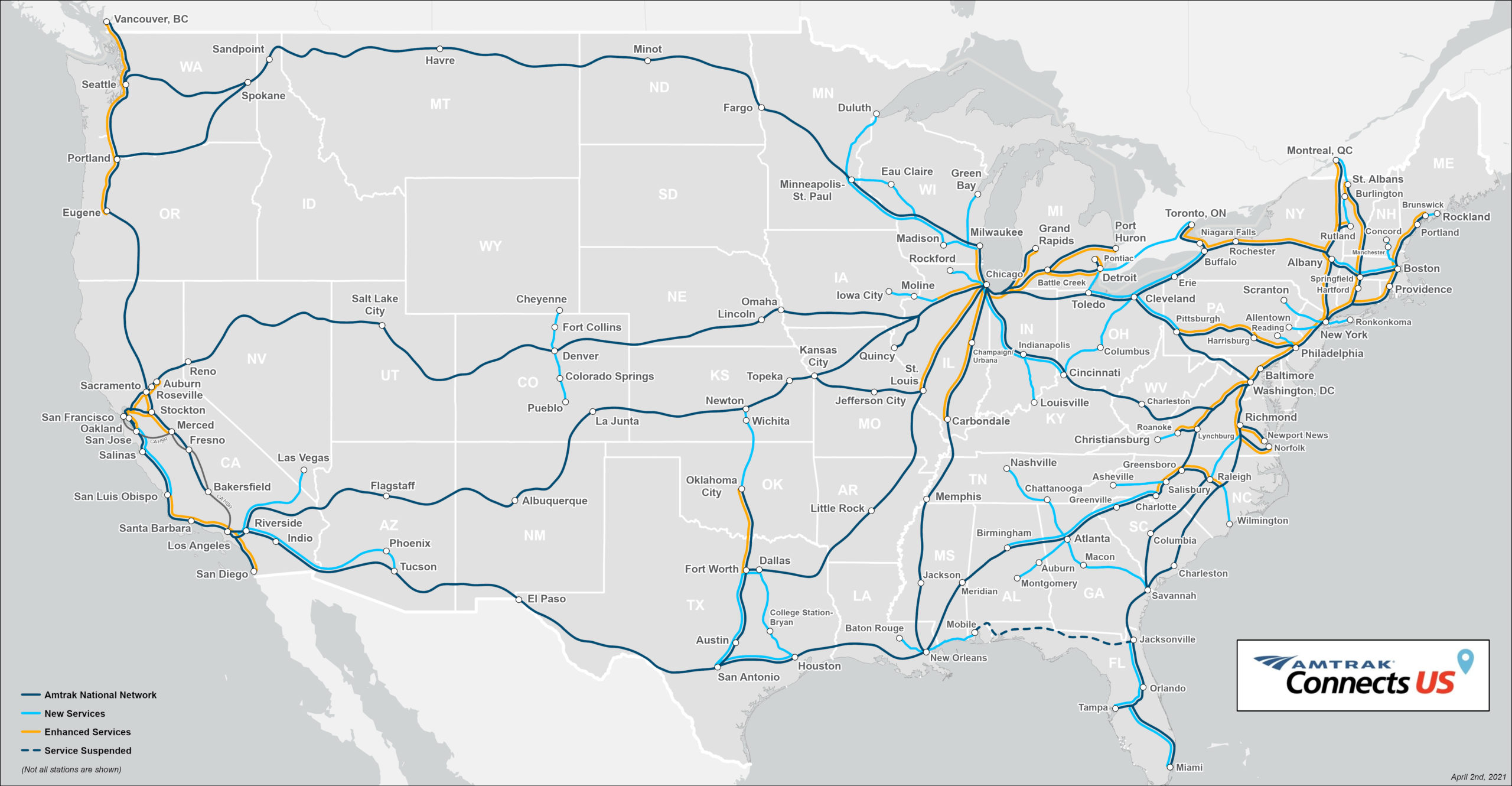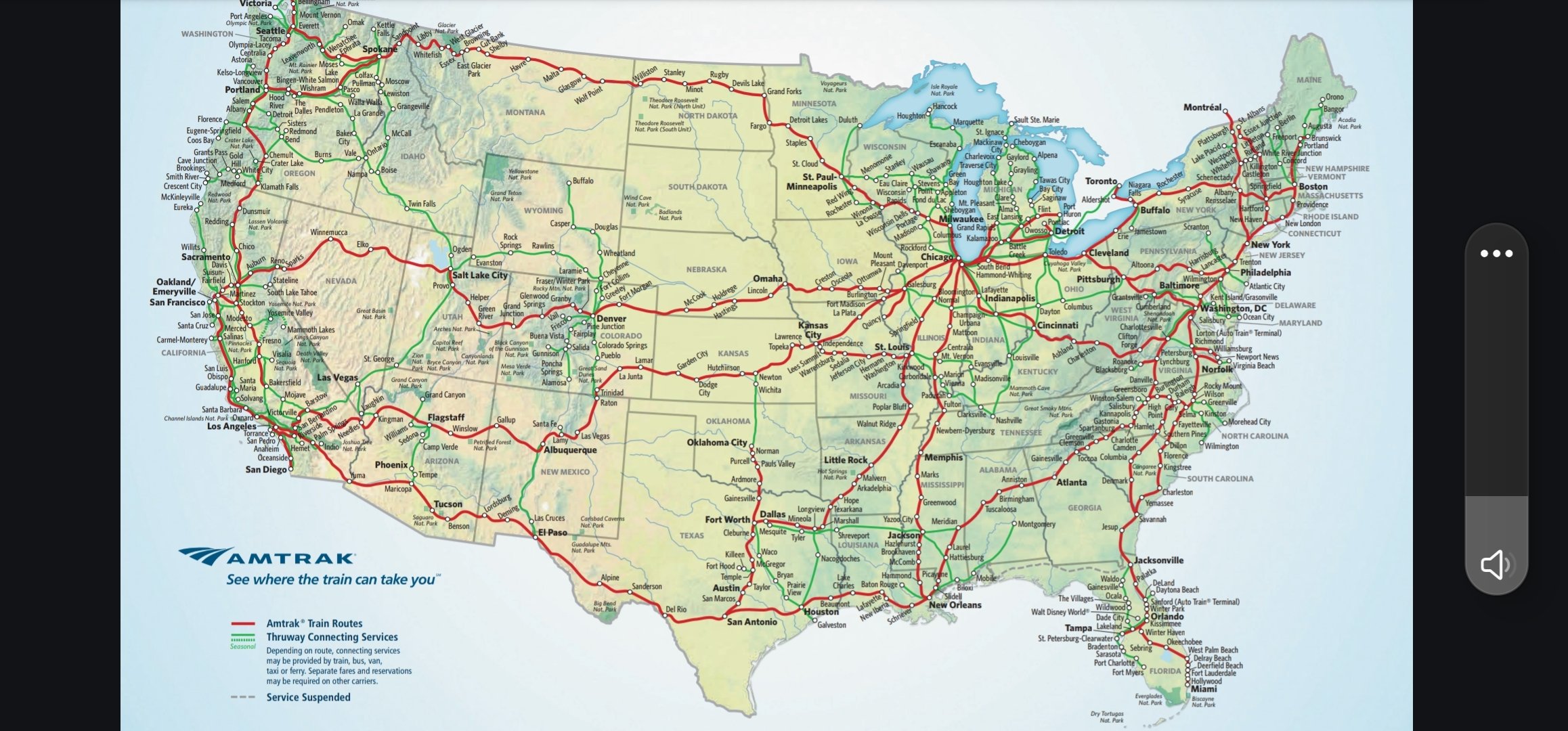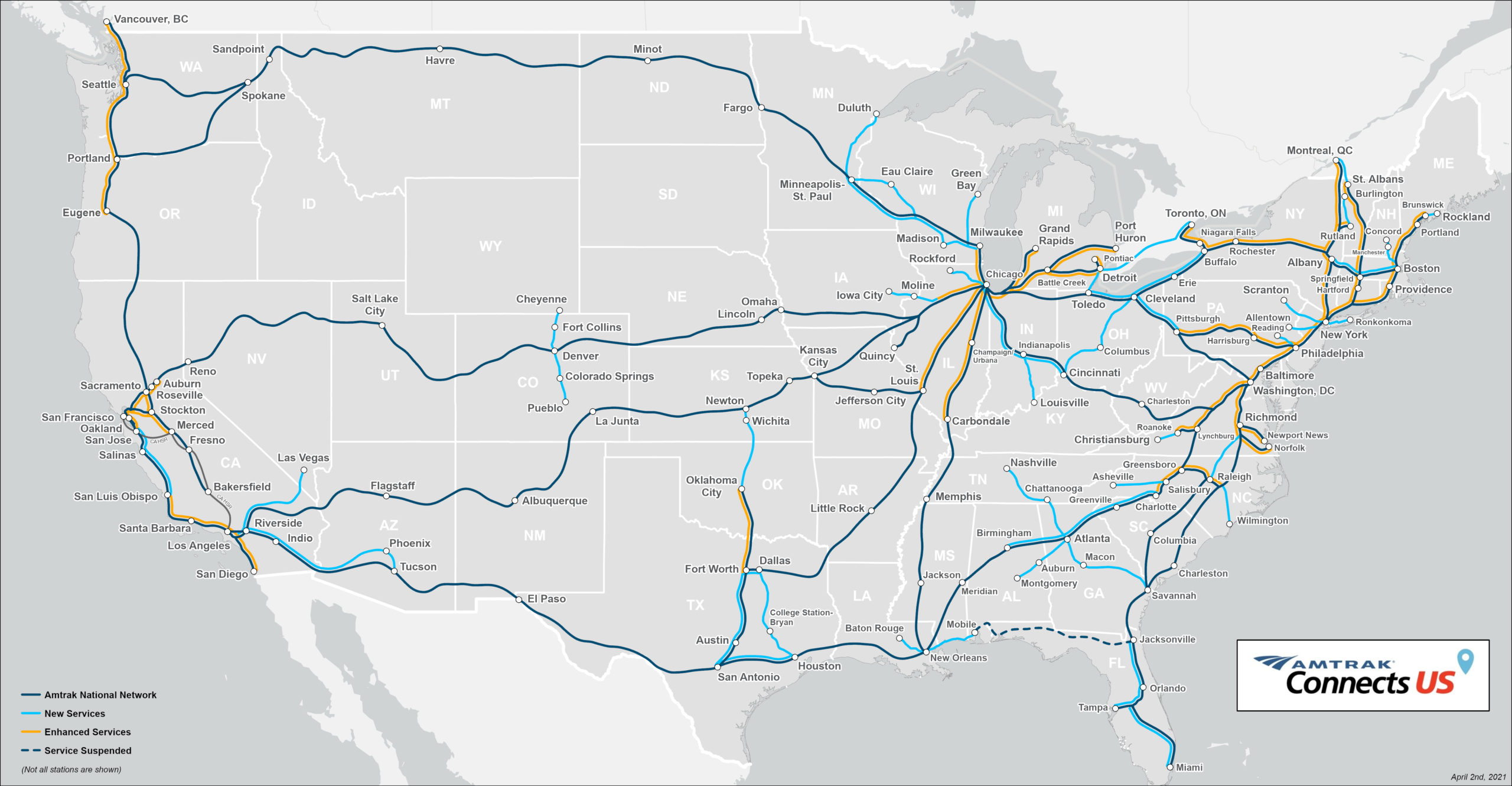Without an “after” pic showing the map as it is now, this isn’t informative for most people

I’ll edit and put it in the body too. Good call.
This map doesn’t show all the stations.
Here is the actual current map

From
Important to note the key in the bottom left. The green lines aren’t trains, they’re generally bus routes that Amtrak coordinates with.
Blame Amtrak. I got the image from their website.
That map is on the Amtrak website in an article highlighting areas of planned new development. https://media.amtrak.com/amtrak-connects-us/
Ah, my mistake. Thanks.
The European mind cannot comprehend this simple trick!
Nice, Nova Scotia exists after 1979.
So the grid is basically the same but most of the stations are gone.
I’m not sure why the current map doesn’t show them, but no, the stations are not gone. I ride the Amtrak from Chicago far out west quite often, it still stops in all of the places that the old map says.
The “after” pic isn’t showing all the stations.
The other difference is some routes get 2 trains a day and it probably cost $5k to go cross country
2 trains a day would be an improvement for many routes, a lot are 1 train a day or 3 trains a week.
Yeah i didnt mean to make antrak sound good. Its a laughable grid even for 1979 and to not have evolved since then while lowering frequency and increasing fares its just a joke.
The blue diagonal names makes this really hard to compare.
And it doesn’t really show how fast/reliable service is. With freight having priority on all the rails, passenger gets fucked over, becoming slow, unpredictable, and spotty.
This is disingenuous, rail is slower and less accessible than it used to be but ridership is actually higher than ever. That map is from a future plans report highlighting certain routes that are being expanded and added. https://media.amtrak.com/2024/12/amtrak-sets-all-time-ridership-record-in-fiscal-year-2024/ https://media.amtrak.com/amtrak-connects-us/
but ridership is actually higher than ever.
If you mean by hard numbers, that would also be disingenuous because the population is far higher now than it was in 1979- 225.1 million vs. 345.4 million.
But if you mean as a percentage of population, that’s different.
Of course population is far higher, but population density and rail infrastructure efficiency are inextricably linked. I’m not saying Amtrak is anywhere close to as good as it should be, passenger rail, especially commuter rail and high speed rail is a national embarrassment in this country.
All the proof you need that north america is not “too big” to build a railway. There are already several railways from coast to coast.
I spent a few minutes playing ‘spot the difference’ here’s what I’ve got:
- Line from Portland to Salt Lake City is gone.
- Line that goes through Southern Montana and Southern North Dakota is gone.
- Line connected Nashville to Louisville is gone.
That’s about it? That doesn’t seem like that much. First picture is full of place names and has dotted lines for “connected motorcoach services” that make it seem a lot fuller.
The light blue lines are Biden and the IRA. They’re not built/running yet.
Chicago to Jacksonville is gone
Did they purposely avoid South Dakota?
Is there anything to not avoid in South Dakota? I’m sure there’s still a conestoga wagon or stage coach or something to Sioux Falls if you must go there.
what… I know that you don’t have much in the way of public transit but… you remove what little you have now?
Oh this is nothing. Read up on the streetcars. The country basically removed most of its mass transit light rail because the car companies weren’t selling enough cars.
They didn’t even do it in smart ways. This town just paved over the tracks. Now, 80 years later or whatever it is, the streets are caving in and they have to do all these expensive repairs.
Not only that, but most cities will claim they aren’t big enough to support a tram, despite nearly every city having trams 100 years ago
Believe it or not the US actually has one of the largest rail networks in the world still. Passenger rail is just not popular.
While true, I would add that a big reason is that freight is prioritised by rail companies, causing large and frequent delays for passengers. Amtrak owns some of its own rail, mostly in the northeast, which is perhaps less-than-coincidentally the part of the US that has the most people taking trains.
that’s because it’s a continent. comparing it to other countries by route km is ridiculous. if you look at coverage, or population per km it’s absolutely abysmal. the US comes 132nd per population covered. not to mention 80% of the network is freight lines. so it’s the same old: because it’s a good thing, it’s mostly there for corporations.
here’s another map comparing the early days of Amtrak post rail crisis, and now.
Reasonable, sustainable infrastructure stands no chance against the petrol-dollar.
You make a good point, but I wouldn’t use The Atlantic Council as a source considering who their chairman is: https://en.wikipedia.org/wiki/John_F._W._Rogers
Still didn’t go anywhere near me.
If they would just reconnect Louisville-Nashville it would be so much more convenient. If you want to travel between Chicago and almost anywhere in the Southeast, you have to go by way of either DC or New Orleans, which can make the trip like 20+ hours. I challenge anyone to find an area that could better increase connectivity with an equivalent length of track. Hopefully the fact that they’re adding the cities to the network at all suggests that they have plans to connect them to each other in the future, because like, it ought to nearly double the passengers in both cities if you can go north or south, on top of the through traffic.
They can’t go through Bowling Green. Not after that massacre!
This is why I feel the height was the seventies. Was it a great time necessarily but we were still making progress. I mean yeah technology progressed after but little else. Some political wins here and there but so much regression.
On the other hand, everyone was inhaling lead fumes at the time. And buildings were full of asbestos.
I get things like this when I mention the seventies. The fact is was regulated out in the 70’s is what made it the height. the problem is things like that no longer happening in the 80’s onward much with the villianification of regulation.
Lead and asbestos weren’t banned until long after the 70s. Asbestos was (sort of) banned in 1989, and leaded gasoline wasn’t banned until 1996.
This is a bit misleading. We still have lead water pipes but the start of getting rid of lead from paint and gasoline in the 70’s and its crazy we still have not gotten rid of it in pipes with just recently during our more sane times of the last few decades some more regulation (if it stands in the next four years.) Asbestos is a bit of a special case as it did prevent fire deaths significantly and there was issues with replacing it with something as effective and issues with disturbing it possibly being more dangerous by requiring it to be replaced. but regulation again did start in the seventies with exposure to workers in manufacturer. Still much like lead pipes it is only in the past year during our brief blip of enlightened times that its been banned mostly. Again if it stays in place.
deleted by creator
Yeah but your talking niche cases so I figured you were looking at it more broadly. The epa phasedown started in the early 70’s and the requirement of catalytic converters combined with leaded gasoline not being allowed in vehicles with catalytic converters essentially got rid of it despite it being able to be used in aviation and race cars and such along with legacy cars if you could find it.
Reag- Oh wait that was Carter.
Carter liked the trains. Reagan was the one behind the defunding. That’s why 1979 was the peak and not 1980.
I’m sure Carter liked trains, but he was still a neoliberal who staffed his admin with people who believed Amtrak should be profitable and cut 10,000 miles from Amtrak’s network.







